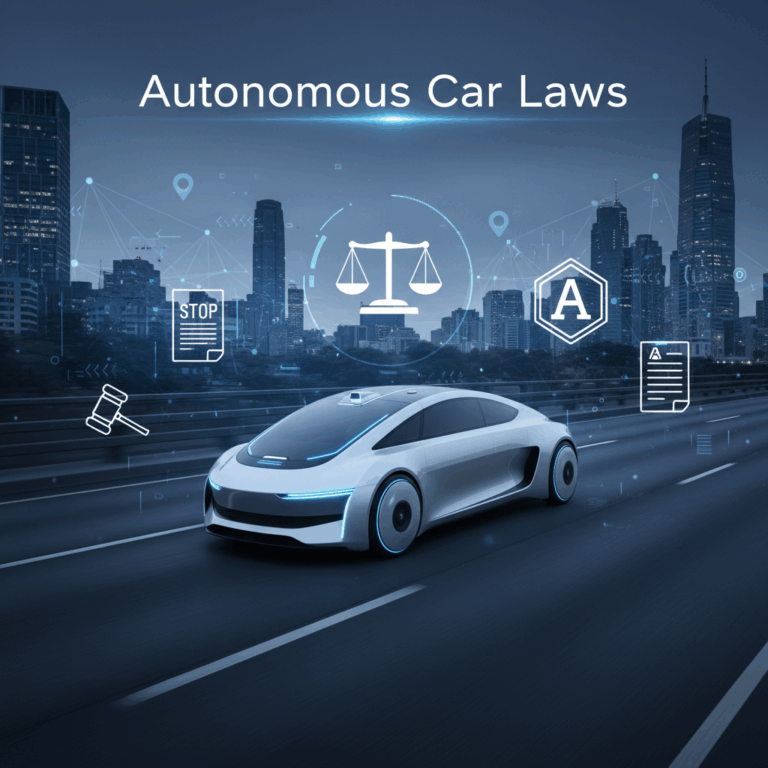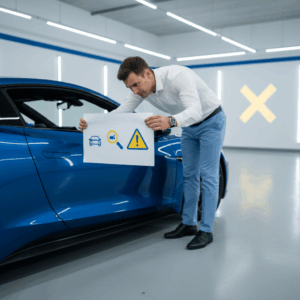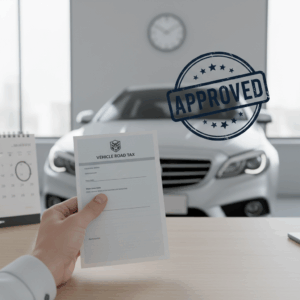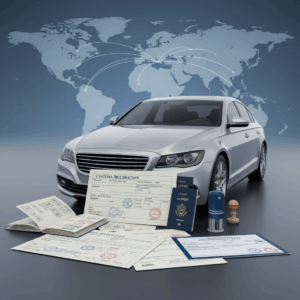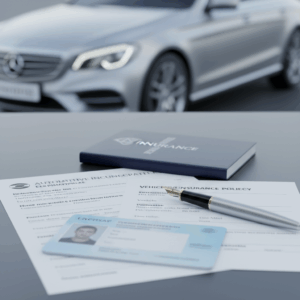Legal classification and regulatory levels
The legal framework for autonomous vehicles is rapidly evolving due to fast technological advances and the pressing need to regulate safety and liability. Current laws in many countries are still not fully adapted to advanced autonomy levels.
Introducing autonomous driving systems transforms transportation but challenges existing legislation. Regulations must catch up with the technology to ensure safe integration of these vehicles onto public roads.
Harmonizing standards globally is essential for consistent regulatory approaches and to foster innovation while protecting users effectively as autonomy progresses.
International standards for autonomy levels
International bodies like SAE International and ISO have defined six autonomy levels, ranging from Level 0 with no automation to Level 5 representing full autonomy without human intervention. This classification aids in regulating and understanding vehicle capabilities worldwide.
These standards form a common language for developers and regulators, helping nations align their policies and safety requirements for self-driving technologies across borders and markets.
By distinguishing these levels, authorities can tailor legal frameworks to specific capabilities, such as when human takeover is required or when the vehicle operates independently.
European regulations on autonomous vehicles
Since July 2022, the EU’s General Safety Regulation enforces a legal structure approving automated and driverless vehicles, emphasizing advanced driver assistance but still pending full autonomous vehicle certification standards.
Europe now permits Level 3 systems, enabling a vehicle to autonomously drive under certain conditions while the human remains legally responsible and ready to intervene if necessary.
This approach reflects a cautious but progressive adoption allowing regulatory agencies to monitor safety and technology maturity before broader implementation of full autonomy.
Current national laws and compliance
National laws on autonomous vehicles vary widely, reflecting different paces of adoption and regulatory readiness. Compliance with these laws ensures safety and liability clarity amid evolving technology.
Countries are beginning phases of legal integration for autonomous systems, balancing innovation with public security. Spain exemplifies a cautious approach with specific legal measures and limitations.
This gradual adaptation helps manage risks involved in deploying increasingly autonomous vehicles on public roads, preparing legal frameworks for future advancements.
Spain’s legislation on autonomous driving
Spain currently authorizes only Level 2 autonomous systems, involving active driver assistance but requiring consistent human control. Full autonomous vehicle circulation remains restricted.
The 2022 amendment to Spain’s Traffic Law mandates notifying vehicle automation capabilities to the Vehicle Registry, reflecting cautious regulatory monitoring of automation features.
Although Spain’s DGT issued guidance since 2015 recognizing up to Level 5 autonomy, commercial use of fully autonomous cars is still not legally accessible to the public.
Vehicle registration and automation capabilities
Vehicle registration laws are evolving to include automation levels within official documentation, enhancing transparency about a car’s driving system capabilities and compliance status.
In Spain, this means that vehicle ownership records must specify the degree of automation, ensuring authorities and drivers are aware of the technical characteristics and limitations.
This regulatory measure aids in law enforcement and insurance processing, providing a legal framework aligned with technological progress and safety requirements.
Limitations of commercial use for full autonomy
Current laws restrict the commercial deployment of vehicles with full autonomy, aiming to mitigate risks until the technology and legal structures mature adequately.
Spain exemplifies this cautious stance, delaying the commercial availability of Level 3 or higher autonomous vehicles to protect public safety and establish liability frameworks.
These limitations indicate a deliberate strategy to ensure legal and infrastructural readiness before fully integrating autonomous cars into everyday traffic scenarios.
Liability and legal responsibility challenges
Determining liability in accidents involving autonomous vehicles presents complex legal challenges due to the shift from human to machine control.
Traditional responsibility models focus on human drivers, but higher autonomy levels require new frameworks assigning blame to manufacturers, software developers, or owners.
As technology evolves, legal systems must adapt to ensure clear and fair allocation of accountability in incidents involving autonomous cars.
Responsibility allocation in accidents
When human intervention is required, existing civil liability laws apply, placing responsibility primarily on the driver.
Full autonomy obscures this picture, shifting potential liability towards vehicle owners, manufacturers, or software developers responsible for system failures.
This shift calls for rethinking fault determination methods, as accidents may stem from hardware malfunctions, software errors, or inadequate maintenance.
Legal clarity is essential to protect victims’ rights and facilitate dispute resolution in complex accident scenarios involving autonomous technology.
Insurance and international legal adjustments
The rise of autonomous vehicles demands innovative insurance products tailored to new types of risks, including software flaws and cyber threats.
Standard insurance policies focus on driver responsibility, but coverage must evolve to encompass manufacturer liability and emerging international legal frameworks.
Global harmonization of laws and conventions is necessary to handle cross-border accident claims and liability disputes involving autonomous cars.
Developing specific insurance schemes and updating legal treaties will support safer adoption while providing financial protection for all parties involved.
Future directions and legal adaptations
The future legal framework for autonomous cars must be flexible and adaptable to rapidly evolving technologies. Legislations should balance innovation, safety, and user protection effectively.
Adapting laws involves updating liability rules, insurance requirements, and compliance standards to cover emerging challenges posed by fully autonomous driving systems.
Legal systems will need continuous revision to keep pace with autonomy advancements, ensuring clear responsibilities amid complex interactions between humans, vehicles, and software developers.
Need for flexible legal frameworks
Rigid laws cannot keep up with the fast-changing nature of autonomous vehicle technologies. Regulatory frameworks must allow for iterative updates and scenario-based provisions.
Flexibility enables the integration of new vehicle capabilities, software updates, and shifting use cases without waiting for lengthy legislative processes to catch up.
This approach is crucial for addressing unforeseen issues in safety, data privacy, and liability as autonomous systems evolve beyond current designs and expectations.
Adaptive legal approaches as a foundation for innovation
Some countries are exploring performance-based regulations, focusing on outcomes rather than prescriptive rules. This fosters innovation while maintaining safety standards.
Such frameworks enable testing, validation, and certification processes to evolve in tandem with technology, promoting market readiness and public trust.
Impact on infrastructure and mobility culture
Legal changes will drive transformations in road infrastructure to support autonomous vehicles, such as smart signals, enhanced signage, and dedicated lanes for self-driving cars.
These adaptations will promote safer and more efficient traffic flows, reducing accidents related to human error and facilitating new mobility models like shared autonomous fleets.
Moreover, autonomous vehicles will influence cultural attitudes toward vehicle ownership, public transport, and urban planning, demanding new legal considerations for accessibility and equity.

